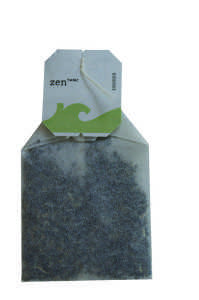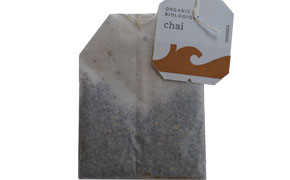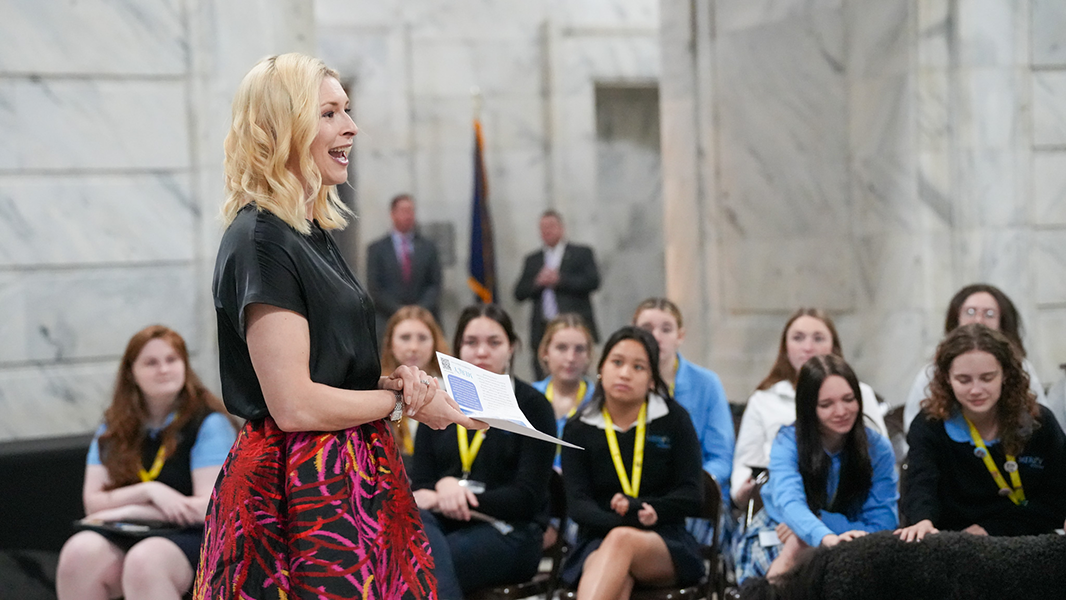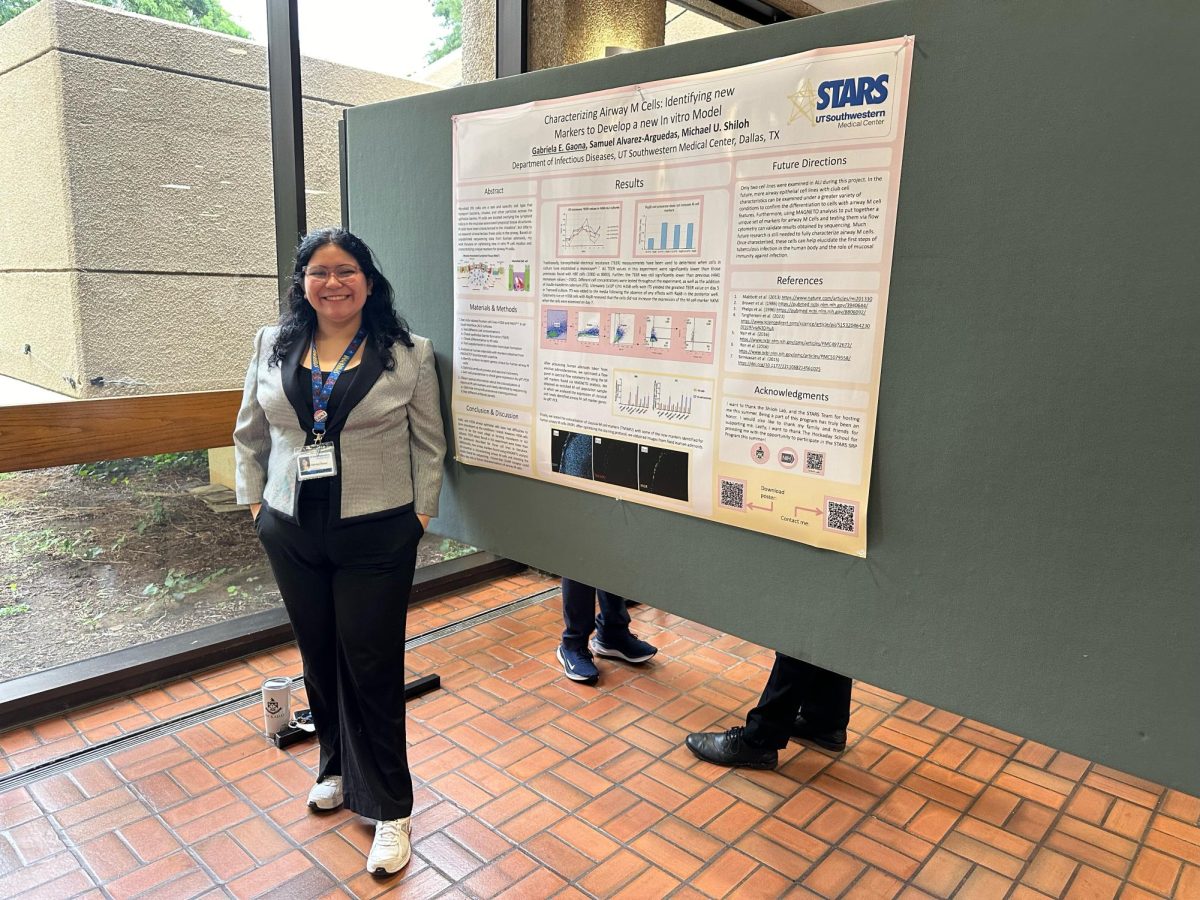Organic Chemistry girls conducted research to find TAZO tea caffeine content

Source: Tazo Tea
PHOTO BY ALAINA RODRIGUEZ
The TAZO tea 58 percent of Hockaday girls prefer to drink may give more of a morning buzz than they think. Throughout February and March, the spring semester Organic Chemistry class investigated which black and green TAZO teas contain the most caffeine. To practice their lab techniques, they extracted caffeine from the brewed tea, analyzed results and compared their results to scientific literature. This caffeine extraction is a fairly typical experiment, but Organic Chemistry teacher Ann Ojeda wanted this to be more of a research development project, she said. All the girls in the class had taken at least one chemistry class before, whether at the regular or AP level, so they felt prepared for a more lab-based curriculum.
“We know the basic lab procedures,” senior Alexis Jones said. “We know how to work properly, do all the safety. I think that now we’re at a stage that we can design things that are pertinent to our lives and the community because we have that solid foundation.”
First the girls surveyed Upper School students to research and develop an experiment that would be relevant to the Hockaday community.
“We were interested in an experiment that was accessible and also a continuation of our learning about extraction techniques and organic compounds,” senior Shreya Ahuja said. “The prevalence of [caffeine’s] use in people’s lives today made it very accessible.”
The girls designed their research question for two days. Through this process, Ojeda said they asked questions such as, “What do we want to look at? Do we want to compare coffee and tea? Or just coffees? Or chocolate? What did we have the equipment to do? What are some of the research parameters?”
Although the girls originally wanted to extract caffeine from chocolate, this was not feasible because chocolate is a solid, and factors such as temperature could pose problems.
“There’s a lot of experimental obstacles we could or could not have addressed,” Ojeda said.
They ultimately decided on testing five TAZO teas—English breakfast, earl grey, chai, zen and chun mee green—because caffeine is easier to extract from liquids.
In order to maintain the applicability of the experiments to the Hockaday community, the girls brewed the tea according to the instructions on the box. After they extracted the caffeine from the tea samples, the girls calculated the percent caffeine content and the melting point range of the samples, which indicates the purity of the samples.
Historically, black teas such as English breakfast, earl grey and chai have on average more caffeine than the green teas such as zen and chun mee.
In the study conducted by the Organic Chemistry students, however, the results were not as clear.
English breakfast tea appeared to contain the highest amount of caffeine among the black teas, ranging from 91 milligrams to 136 milligrams in different trials, numbers consistent with the 61+ milligram theoretical yield listed on the box.
The chun mee green tea, however, had a yield of about 250 milligrams, far beyond the 31 to 45 milligram range.
Possible sources of error, Ojeda noted, include the purity of the caffeine sample. Tannin, a type of biomolecule found in tea, could have contaminated the sample. Although the students used sodium carbonate to dissolve the tannin into solution, some of the compound may not have dissolved fully and may have remained in the organic layer with the caffeine sample.
To determine the purity of the caffeine samples, students found the melting point ranges of their samples using a special device. While the melting point of pure caffeine is about 238 degrees Celsius, the melting point ranges of the trials were often very wide and did not include the 238 degree mark. Both these facts may explain that the samples were impure, leading to the variability in results between the theoretical and actual yields of caffeine in the samples. Additionally, the students’ inexperience with the new lab technique may have contributed to the error.
Overall, however, Ojeda said the class accomplished her three aims: to design the experiment themselves from top to bottom, to practice the skills for extraction and melting point calculation and to analyze their results. Ultimately, Ojeda said the class realized their results were tentative and that they would need more data and better lab technique to draw definitive conclusions.
Ojeda has been in contact with a professor at Texas Wesleyan University, who has invited the students to present their compiled results at a local American Chemical Society meeting, which occur about once a month for undergraduate and graduate students to present their research. Although the date is still to be determined, Ojeda hopes the girls will be able to present in a poster session before the end of school.
– Mary Clare Beytagh







